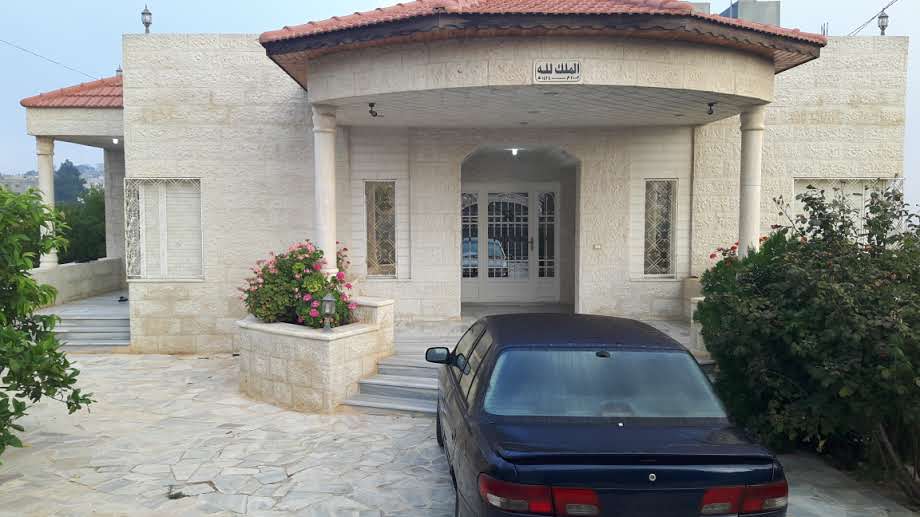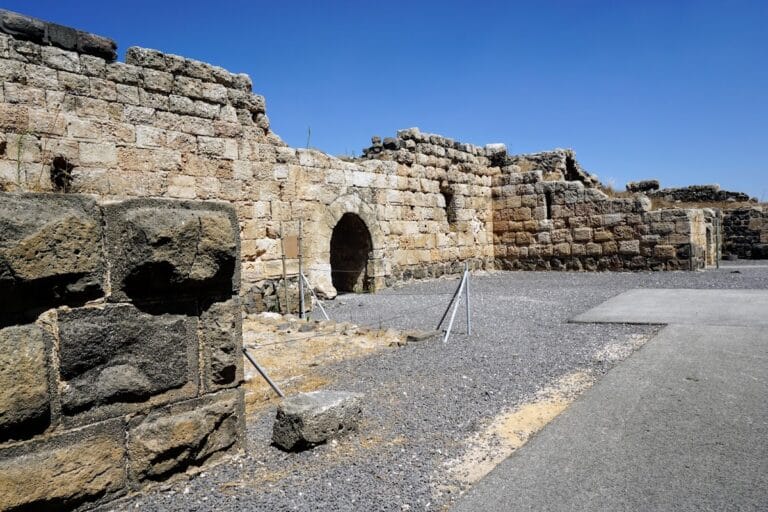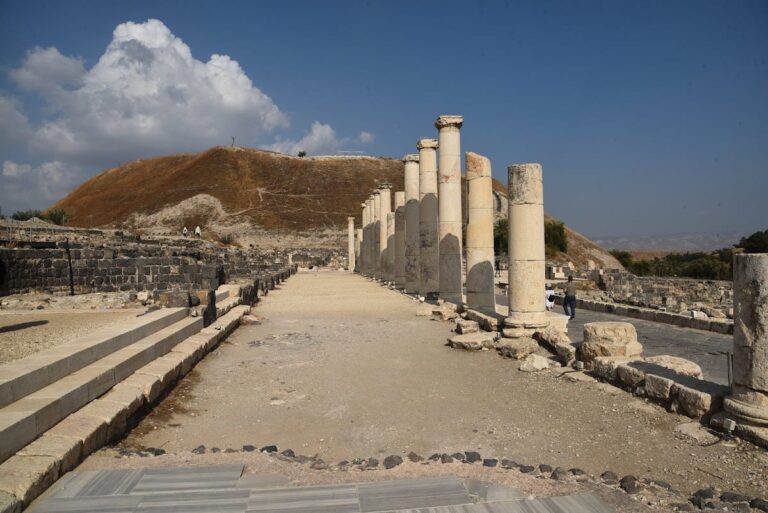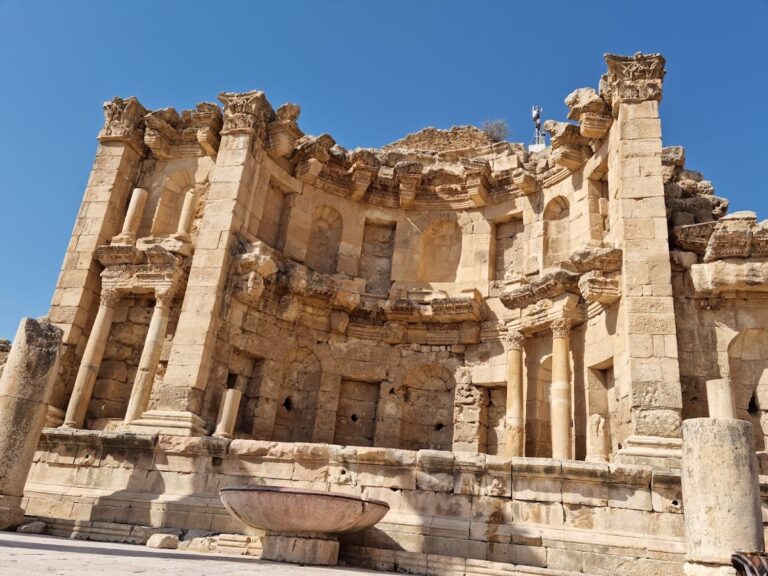Beit Ras: The Roman Theater and Ancient City of Capitolias in Jordan
Visitor Information
Google Rating: 4
Popularity: Low
Google Maps: View on Google Maps
Country: Jordan
Civilization: Byzantine, Roman
Remains: City
History
The Roman Theater at Beit Ras is located in northern Jordan. It stands on the site of the ancient city Capitolias, founded around 97–98 CE during the reign of Roman emperors Nerva or Trajan. The city was established as a planned Roman settlement, likely for military purposes, and named after Jupiter Capitolinus, the chief Roman god of the Capitoline Triad.
Capitolias was part of the Decapolis, a group of cities in the region of Coele-Syria known for their Greco-Roman culture and autonomy. Although not listed among the original Decapolis cities by Pliny the Elder, it was included in later geographic accounts. The city held autonomous status, as shown by its coinage from the mid-2nd to early 3rd centuries CE, bearing titles that indicated self-governance and divine protection. After the Roman annexation of the Nabataean kingdom in 106 CE, Capitolias lay on the border between the provinces of Syria and Arabia Petraea.
The city remained inhabited through the Roman and Byzantine periods. By the 4th century, Capitolias had become a Christian bishopric, with its bishops attending major councils such as Nicaea in 325 CE and Chalcedon in 451 CE. The city is also mentioned in the 6th-century Talmud and by later Arab geographers, indicating its continued significance into the early Islamic era. Following the Arab conquest, the settlement, known as Beit Ras, was noted for its vineyards and wine production.
During the Crusader period, Beit Ras was a small village under the Kingdom of Jerusalem. It was classified as a casalia, a rural settlement, and its revenues were granted to a monastery on Mount Tabor. Archaeological evidence shows that the site was occupied continuously from the 2nd century through the 13th century, reflecting its long history of habitation and changing political control.
Remains
The ancient city of Capitolias covered about 12.5 hectares (approximately 20 acres) and was enclosed by a defensive wall built in the 2nd century CE. This wall featured three gates oriented to the north. The city’s main street, the decumanus maximus, ran east-west and served as the foundation for the modern village’s main road. This street was once paved and lined with colonnades, including an arch with two passageways.
The most prominent surviving structure is the Roman-style theatre, located on the northern slope of the hill. Excavations have revealed the remains of the stage and seating areas. The theatre was in use until the 6th century CE.
Other archaeological features include a temple dedicated to the Capitoline Triad, likely situated near the western end of the decumanus maximus. A three-tiered marketplace and a colonnaded street have also been uncovered. A church dating from the 5th century was later converted into a mosque in the 8th century, illustrating the religious transformations of the site. Water management structures include cisterns for storing rainwater, as the city lacked natural springs and no aqueduct has been found.
Excavations have revealed a Roman military cemetery and paved roads within the city. Large quantities of glass fragments dating from the 3rd to 5th centuries CE indicate that Capitolias was a center for secondary glass production during the late Roman and early Byzantine periods.
A richly decorated tomb from the 2nd century was discovered in 2018. It features painted images of humans, animals, and divine figures, along with a large mural depicting the construction of a city rampart. This mural includes about 60 inscriptions in Aramaic written with Greek letters, resembling modern comic speech bubbles.
Modern Beit Ras covers much of the ancient city, limiting excavation to areas without modern buildings. Non-invasive geophysical surveys have revealed additional urban structures west of the theatre, suggesting a more extensive city layout than previously known.










